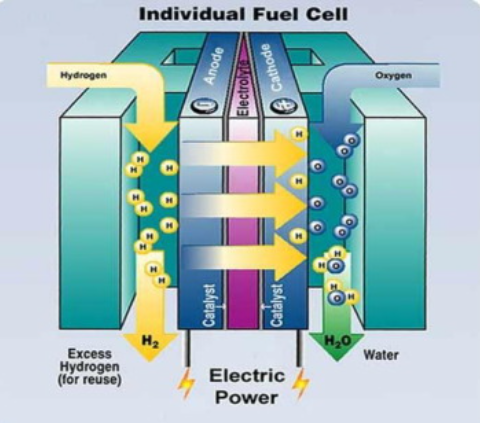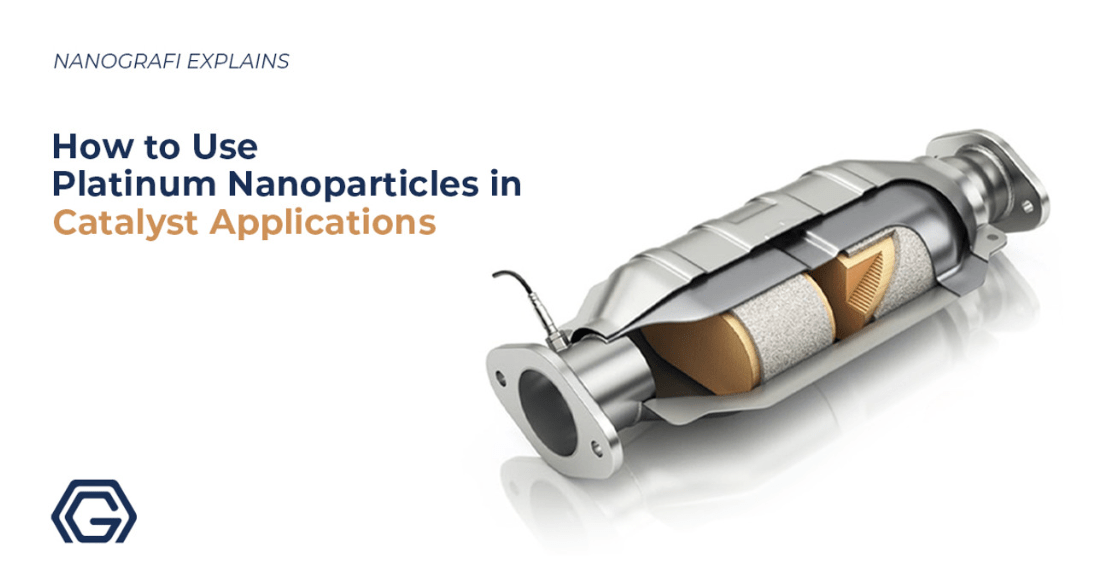Flying into the Future: Hydrogen Fuel Cell Technology with Nanomaterials - Nanografi
Nanomaterials offer many advantages in aviation applications, such as lightweight and strong composites, increased fuel efficiency, advanced propulsion systems, heat resistance.
Additionally, nanomaterials contribute to enhancing hydrogen storage technology. These advantages include high surface area, improved absorption and desorption kinetics, tunable pore structures, and the ability to facilitate hydrogen transport. Nanomaterials also enable storage at low temperatures, increase safety, offer lightweight solutions, exhibit reversibility, and provide chemical stability. With our advanced nanomaterial solutions, we offer innovations tailored for the aviation sector. Enhance durability, reduce weight, and improve efficiency. To discover how we can improve your aviation needs and review our products, visit website.
Introduction
This blog highlights the growing significance of hydrogen fuel cell technology in the aviation industry as a response to environmental concerns and the need to reduce carbon emissions. It outlines the advantages of hydrogen fuel cells, which produce electricity while emitting only water vapor, and introduces the potential transformation of aviation towards a more sustainable future. The subsequent sections will explore the applications, progress, and challenges associated with the rise of hydrogen fuel cell technology in aviation.
It also highlights the significance of nanomaterials in contemporary science and technology. These materials, engineered at the nanoscale, possess unique properties and capabilities that are transforming various industries. The introduction emphasizes the broad range of applications, from medicine to electronics and renewable energy, and raises important questions about safety and ethics. Nanomaterials are positioned as the key to unlocking innovative solutions and driving progress in diverse fields, setting the stage for a deeper exploration in subsequent sections.
Understanding Hydrogen Fuel Cells
Hydrogen fuel cells are electrochemical devices that generate electricity by combining hydrogen gas and oxygen from the air. At the anode, hydrogen is split into protons and electrons, with the latter flowing through an external circuit to create an electric current. The protons migrate through a membrane to the cathode, where they combine with electrons and oxygen to produce water vapor as the only byproduct. Fuel cells are highly efficient and emit no harmful pollutants, making them a clean and environmentally friendly energy source with diverse applications, including transportation and power generation.
Hydrogen as an aviation fuel presents several advantages, including reduced emissions, high energy density, fast refueling, long-range capabilities, reduced noise, and the potential for domestic production. However, it also faces significant challenges, such as the need for extensive infrastructure development, safety concerns, energy efficiency issues, high costs, limited range and payload, and the necessity for green hydrogen production. Overcoming these challenges is crucial to realizing the environmental and operational benefits of hydrogen in aviation. Its successful integration will depend on continued research, investment, and infrastructure development in the aviation industry.

Figure 1. Implementation of nanotechnology in fuel cells.
Nanomaterials: Exploring the Potential
Nanomaterials are playing a pivotal role in aerospace applications due to their exceptional properties and versatility. These materials offer benefits such as lightweight and strong composites, improved fuel efficiency, advanced propulsion systems, heat resistance, sensors and electronics, energy storage solutions, radiation protection, enhanced materials durability, and reduced ice formation. They are particularly valuable for space exploration, where they contribute to the development of spacecraft and equipment capable of withstanding extreme conditions. While nanomaterials offer numerous advantages, challenges related to manufacturing, safety, and regulation must be addressed to fully realize their potential in aerospace. Nevertheless, ongoing research and development in this field promise to transform the aerospace industry by creating more efficient, durable, and environmentally friendly aircraft and spacecraft.To get information about fuel cells development with nanotechnology, you can visit our blog post.
Nanomaterials offer a multitude of advantages for hydrogen fuel cells, revolutionizing fuel cell technology. These benefits include enhanced catalytic activity, improved durability, reduced precious metal usage, better mass transport, flexible design options, high surface area, improved fuel cell membranes, reduced overpotential, opportunities for miniaturization, and environmental sustainability. By harnessing these advantages, nanomaterials contribute to increased fuel cell efficiency, reduced costs, and the broader adoption of hydrogen as a clean and efficient energy source across various applications.
Hydrogen Fuel Cells with Nanomaterials
Nanomaterials offer a range of advantages for efficient hydrogen storage, addressing key challenges in utilizing hydrogen as a clean energy carrier. Their high surface area, improved absorption and desorption kinetics, tunable pore structures, and ability to facilitate hydrogen spillover enhance storage capacity and release kinetics. Nanomaterials also enable storage at lower temperatures, enhance safety, provide lightweight solutions, exhibit reversibility, and offer chemical stability. With diverse material options, nanomaterials hold significant promise for advancing hydrogen storage technology, although challenges like scalability and cost-effectiveness need to be addressed for widespread adoption. Continued research and development in this field will play a crucial role in realizing the potential of hydrogen as a sustainable energy source.
Nanocatalysts are essential in enhancing fuel cell performance through various mechanisms. Their high surface area, improved reaction kinetics, and precise engineering enable more efficient catalysis of critical electrochemical reactions in fuel cells. Nanocatalysts reduce the reliance on expensive precious metals, enhance durability, and resist poisoning and corrosion. They can be integrated into fuel cell components, expand compatibility with alternative fuels, and facilitate hydrogen spillover. These advantages collectively contribute to improved fuel cell efficiency, cost-effectiveness, and applicability across multiple sectors, including transportation, stationary power generation, and portable devices. Nanocatalysts are central to the advancement of fuel cell technology and its potential as a clean energy solution.
Read our blog post to explore the Use of Platinum Nanoparticles in Catalyst Applications for Fuel Cells.
Benefits and Challenges
Hydrogen fuel cell aircraft offer several significant environmental advantages, making them a promising solution for reducing the aviation industry's impact on the environment. These benefits include zero greenhouse gas emissions, improved air quality, reduced noise pollution, resource availability, energy efficiency, longer flight ranges, and a contribution to sustainability initiatives. While challenges remain, such as hydrogen production and infrastructure development, the potential to lower emissions, enhance air quality, and decrease noise pollution positions hydrogen fuel cell aircraft as a crucial component of a more sustainable and
Economic considerations and scalability are pivotal factors in the adoption and success of hydrogen fuel cell technology. Producing hydrogen cost-effectively, reducing fuel cell costs, and investing in infrastructure are essential for economic viability. Scalability involves expanding production, infrastructure, and technology advancements to meet growing demand. Government policies, market adoption, and international collaboration play critical roles in driving hydrogen technology towards wider adoption and realizing its potential as a clean and sustainable energy carrier.
Safety and regulatory aspects are critical in the development and deployment of hydrogen fuel cell technology. Ensuring the safety of hydrogen production, storage, transportation, and utilization is essential for public confidence and regulatory support. Key safety considerations include hydrogen purity, leak detection, ventilation, pressure safety, transportation regulations, hydrogen pipelines, fuel cell encapsulation, and certification. Regulations and standards govern these aspects and vary by region. International coordination, public education, and ongoing research are essential to promote the safe and responsible use of hydrogen as a clean energy carrier.
Current Research and Developments
Hypothetical scenarios demonstrate the potential benefits of integrating nanomaterials into hydrogen-powered aircraft. These scenarios include the use of nanocomposites for lightweight construction, nanocatalysts for fuel cell efficiency, nanomaterials for improved hydrogen storage, and advanced nanosensors for safety and monitoring. Integrating nanomaterials into aircraft holds promise for increasing efficiency, extending flight ranges, enhancing safety, and contributing to the development of more sustainable and efficient hydrogen-powered aviation. It's important to note that real-world applications would depend on continued research, technological developments, safety considerations, and regulatory approvals in the aerospace industry.
Future Outlook: Nanomaterials and Beyond
The future of nanomaterials in aviation is marked by substantial potential to revolutionize the industry. Nanomaterials will enable the development of lighter, stronger aircraft structures, improve fuel efficiency, reduce noise pollution, and advance propulsion systems. Additionally, they will play a critical role in energy storage and management, advanced sensors and electronics, sustainable manufacturing processes, and applications in space exploration. However, addressing challenges related to safety, scalability, cost-effectiveness, and regulatory standards will be essential to realizing the full benefits of nanomaterials in aviation. As technology continues to advance, nanomaterial integration promises to shape a more efficient, sustainable, and innovative future for aviation.
The future of aviation is poised for remarkable innovations and breakthroughs across various fronts. These developments include the emergence of electric and hybrid-electric aircraft, increased use of sustainable aviation fuels (SAFs), advancements in hydrogen-powered aircraft, and the adoption of advanced materials for stronger and more efficient aircraft structures. Aerodynamic enhancements, autonomous flight systems, data-driven optimization, and noise reduction technologies will further enhance aviation efficiency and safety. Electric vertical takeoff and landing (eVTOL) aircraft will transform urban mobility, while zero-emission airports and space tourism and exploration will contribute to a more sustainable and exciting aviation landscape. Overall, these innovations signify a future of aviation that is characterized by sustainability, efficiency, safety, and accessibility.
Conclusion
Nanomaterials play a pivotal role in advancing hydrogen fuel cell technology for aviation. They enhance fuel cell efficiency through improved catalysts, reduce precious metal usage, and increase durability. Nanomaterials also contribute to efficient hydrogen storage, lightweight aircraft structures, noise reduction, safety enhancements, and environmental benefits. By addressing technical challenges and improving energy efficiency, nanomaterials are instrumental in making hydrogen fuel cell aviation more sustainable, economically viable, and environmentally friendly, paving the way for a cleaner future in aviation.
The future of sustainable air travel holds significant promise, driven by a combination of technological advancements and industry initiatives. Key developments include the emergence of electric and hybrid-electric aircraft, increased use of sustainable aviation fuels (SAFs), exploration of hydrogen-powered flight, and the adoption of lightweight materials and advanced aerodynamics to enhance fuel efficiency. Improved air traffic management, sustainable airport operations, noise reduction technologies, carbon offsetting, and public awareness are contributing to the industry's sustainability goals. With ongoing efforts in research, innovation, and policy support, the aviation sector is moving toward a more eco-friendly and responsible future, reducing its environmental impact and ensuring sustainable air travel for future generations.To contribute to sustainable living and experience the high performance of nanomaterials, meet Nanografi.
References
A hydrogen-powered plane just flew. Here’s how it works. | Popular Science. (n.d.). Retrieved March 14, 2024, from https://www.popsci.com/technology/hydrogen-fuel-cell-aircraft-explained/
Fuel Cells Development with Nanotechnology - Nanografi Nano Technology. (n.d.). Retrieved March 14, 2024, from https://nanografi.com/blog/fuel-cells-development-with-nanotechnology-728a03/
How to Use Platinum Nanoparticles in Catalyst Applications For Fuel Cells - Nanografi Nano Technology. (n.d.). Retrieved March 14, 2024, from https://nanografi.com/blog/how-to-use-platinum-nanoparticles-in-catalyst-applications-for-fuel-cells/
Imagine: The Future of Renewable Energy Nanotechnology - Nanografi Nano Technology. (n.d.). Retrieved March 14, 2024, from https://nanografi.com/blog/imagine-the-future-of-renewable-energy-nanotechnology/
Karthik Pandiyan, G., & Prabaharan, T. (2020). Implementation of nanotechnology in fuel cells. Materials Today: Proceedings, 33, 2681–2685. https://doi.org/10.1016/J.MATPR.2020.01.368
Sustainable Aviation Fuel (SAF). (n.d.). Retrieved March 14, 2024, from https://www.icao.int/environmental-protection/pages/SAF.aspx
Walz DOE, M. (2020). FAA Hydrogen Fuel cell research.
Recent Posts
-
Advanced Materials for Unmanned Aerial Vehicle (UAV) Protection Against Laser
Consider a UAV on a critical mission, rendered inoperative by a sudden laser attack. With the increa …26th Jul 2024 -
Simulation and Modeling of Material Properties
Our world is composed of a dazzling array of materials, each with its own unique properties that dic …19th Jul 2024 -
Advanced Coatings for Superior Corrosion and Wear Resistance
Corrosion and wear pose significant challenges across various industries, leading to substantial eco …12th Jul 2024







